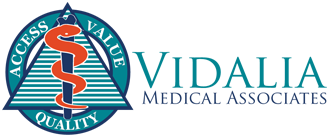Preparation for Esophageal Manometry and 24 Hour pH Testing
Patients must be fasting (do not eat or drink) 8 hours prior to testing. 72 hours prior to testing patients need to stop intake of
- Caffeine (coffee, tea, cola, chocolate)
- Alcohol (beer, wine, liquor)
Some medications may interfere with the test. Be sure to check your medications with your physician.
Esophageal Manometry takes about 30 minutes. A thin tubing is gently passed through the nose and down the esophagus. Once swallowed, the tip of the tube is positioned in the esophagus. The patient may have some mild gagging at this point which quickly passes. During testing patients will be asked to swallow sips of water (called a wet swallow) while pressure recordings are made. The tube is removed at the complection of the recordings.
24 hour Ambulatory pH testing requires the insertion of a thin flexible tube through the nose which is positioned in the lower esophagus just above the LES. The tube contains the pH probe. The tube will be wrapped around the patient’s ear and taped into place. The probe is attached to the waist recorder. Patients are then instructed to resume normal activities and diet. To protect the recorder patients, may not take a shower or tub bath during the test period. Patients return the next day for the removal of the probe and recorder.
Preparation for Video Capsule Endoscopy
 Patients must fast (not eat or drink) for 12 hours before the study and refrain from taking any medication that could delay gastric emptying. On the scheduled day of the test the sensors, data recorder, and battery pack are attached to the patient. Patients then swallow the video capsule with a small amount of water. Patients are then free to leave and to resume their normal daily activities. Patients are allowed to drink clear liquids 2 hours after the capsule ingestion and are able to eat a light meal 4 hours later.
Patients must fast (not eat or drink) for 12 hours before the study and refrain from taking any medication that could delay gastric emptying. On the scheduled day of the test the sensors, data recorder, and battery pack are attached to the patient. Patients then swallow the video capsule with a small amount of water. Patients are then free to leave and to resume their normal daily activities. Patients are allowed to drink clear liquids 2 hours after the capsule ingestion and are able to eat a light meal 4 hours later.
Approximately 8 hours after the ingestion of the capsule patients return to have the data recorder removed. Patients can resume their regular diet and activities but are advised to avoid magnetic resonance imaging (MRI) and radio transmitters until the disposable capsule passes in the stool, typically within 10 to 48 hours.
Patients should notify their physician if they develop nausea, vomiting, abdominal discomfort, or if they do not see the capsule passed in the stool within 1 week.
Preparation for PillCam Endoscopy
Patients fast for two hours before the procedure.
Patients swallow the smooth plastic capsule easily with while laying on his/her back.
During the procedure the patient will be raised at different degree angles until they are sitting upright. Total procedure time is approximately 30 minutes.
Natural digestive contractions help propel the disposable PillCam through the gastrointestinal tract and are passed naturally and painlessly from the body, usually within 24 hours.
PillCam Endoscopy does not require sedation, recovery is immediate and is preferred by patients over traditional endoscopy.
Preparation and Administration of Hydrogen Breath Test
Patients must be fasting (do not eat or drink) for a least 12 hours prior to the test.
The patient will blow into a balloon and fill it with air. A sample of the air is taken from the balloon to measure the concentration of hydrogen. The patient is then given a small amount of test sugar (lactose, sucrose, sorbitol, fructose, lactulose, etc.). Breath samples are collected and analyzed for hydrogen at various time intervals for a period 3 to five hours.
